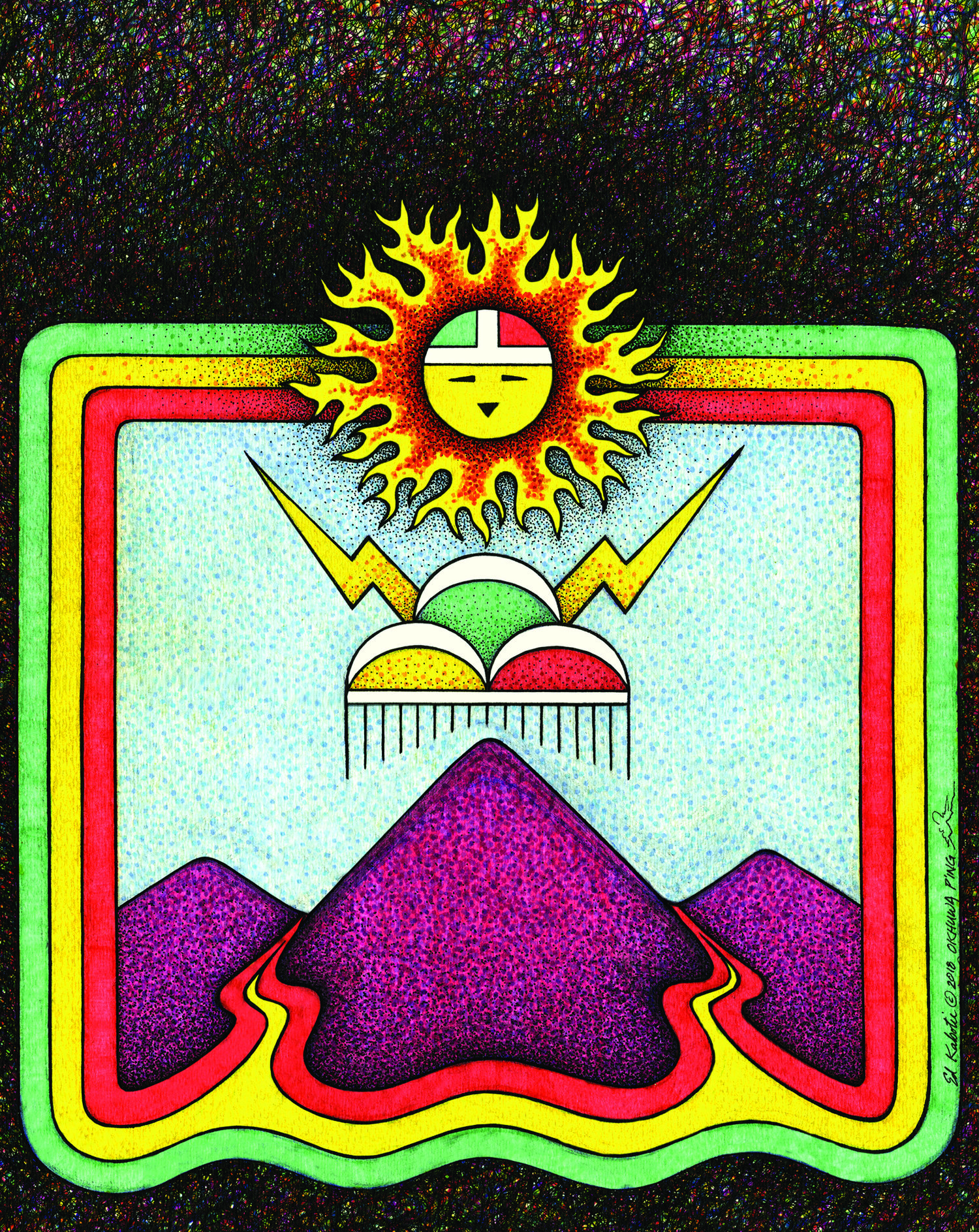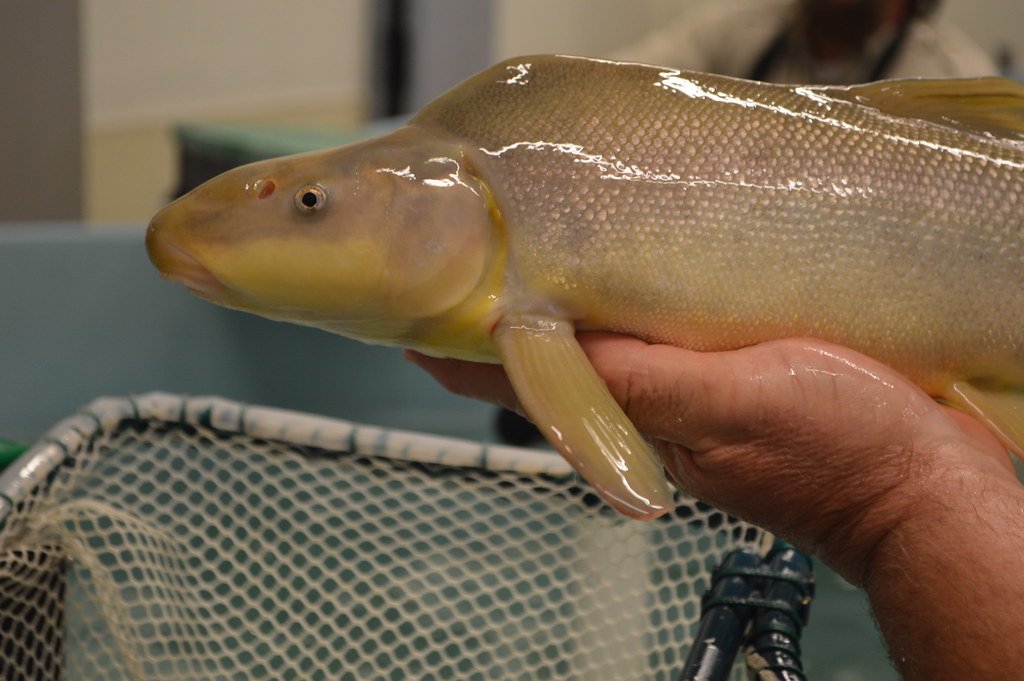Ecology and Importance of Verde Headwater Springs
The Verde River Basin
The Verde River and its watershed are at the heart of Arizona, encompassing an area that stretches from near the southwest reach of the Grand Canyon to the Verde River’s confluence with the Salt River in Scottsdale. The Verde River is 192 miles long, and is a critical feature on the landscape for its lush riparian habitat, its role as an ecological migration corridor, and as one of the last of Arizona’s free-flowing rivers. Forty miles of the Verde River have been given a federal designation of Wild and Scenic River. The Verde River’s waters are critical to life in central Arizona, but the source of these waters is often overlooked.
Verde River Hydrology & the Role of Springs
Flow in the Verde River comes from several sources: runoff from rainstorms, runoff from snowmelt, and flow from springs. Springs are emergence areas where groundwater comes into contact with the surface of the Earth. In the Verde River, the portion of the river flow derived from springs is referred to as baseflow. The baseflow is the portion of the river flow not dependent on recent weather patterns, such as a rainstorm this week or snowpack accumulated during the prior winter. In other words, springs are responsible for the perenniality, or relative permanence of the river flow in the Verde.
Plants and Animals
Springs and spring-dependent riparian habitats support a disproportionate amount of biodiversity in the US southwest. The following species are a small selection of the many species that are dependent on the habitat provided by the Verde River.
Click on the images below for more information about Verde watershed springs-dependent species.
Importance to Communities
Farming and Ranching: Verde Watershed springs help feed Arizona
Agriculture is widely recognized by Verde Valley residents as being an important component to the history, character, culture, and environment of the region. The first evidence of agriculture in the Verde River Basin has been attributed to the Hohokam circa 700 A.D., followed by the Southern Sinagua from circa 1150 to 1425 A.D (Bausch et al. 2019). In the mid-19th century, settlers of primarily European descent began farming and ranching in the Verde Valley. These settlers began diverting water from the Verde River and its tributaries to their farms and pastures beginning in 1865 (Bausch et al. 2019). Today, the Valley’s growers maintain mostly small agricultural operations (44% of parcels are less than 10 acres; the average farm size is 967 acres) that produce alfalfa, barley, beef, corn, lamb, pecans, vegetables, wine grapes, and more (Bausch et al. 2019). While agriculture is no longer a primary driver of the Verde Valley’s economy, it maintains a characteristic of the quality of life in the region through food production, maintaining the region’s rural character, preservation of open space and wildlife habitat, and tourism. Wineries, festivals, farmer’s markets, farm stays, farm-to-table restaurants, and roadside stands are integral to both resident and tourist economies and bolster regional character.
Recreational opportunities for locals and visitors
Thanks to perennial baseflow from springs, the Verde River and its major tributaries such as Oak Creek, Beaver Creek and West Clear Creek are lined with lush, welcoming riparian habitat. Visitors to these beautiful flowing streams enjoy hiking, swimming, birdwatching, fishing, canoeing and kayaking.
Threats to Verde Watershed Springs
Groundwater Pumping
The Verde River Basin has seen extensive growth of groundwater use since Euro-American settlement, and this use has accelerated substantially since 1980 (Haney et al. 2008). Groundwater pumping provides local communities with critical water resources, but the increased use has led to groundwater depletion, a term describing long-term water-level declines caused by sustained extraction. Water table declines can cause springs to move, decrease in flow, and even stop flowing completely. The Verde River has already been altered by groundwater pumping, with perennial flow beginning five miles downstream from its historical source at Del Rio Springs (Haney et al. 2008). Streamflow gauges have reported declining base flow since about 1994 (Haney et al. 2008). With the projected increase in human population comes the associated demand for water. Without action, groundwater pumping will continue to decrease streamflow at the expense of springs, riparian ecosystems, and the character and longevity of the Verde River.
Wells as of 1950 (left) and wells as of 2015 (right). Images courtesy of Salt River Project via Friends of the Verde River.
USGS streamflow data at Del Rio Springs, the historic perennial headwater of the Verde River mainstem. This figure shows the entire period of record for the stream gauge, beginning in August 1996. The flow rate was recorded as 0 cubic feet per second for the first time in May of 2012. Data courtesy of the US Geologic Survey Arizona Water Science Center.
Non-Native Aquatic Species
Nonnative aquatic species can significantly disrupt aquatic ecosystems. They are often easily transported by humans and reproduce quickly. In some cases, they consume native organisms. Crayfish, nonnative sport fish, and New Zealand mud snails are some of the nonnative organisms of concern in the Verde watershed.
Recreational Overuse
Ecological conditions can be affected when many people visit the same beautiful place in a short time span. Aquatic ecosystems like springs and streams are especially vulnerable. Soils and vegetation can be damaged by trampling, water quality can be affected by feces from human visitors and their pets, and wildlife can become sick from eating trash. When visitors take care to tread lightly in the natural areas they visit, many of these problems can be reduced or avoided. Click here to learn more about using Leave No Trace principles for protecting outdoor spaces.
The spring-fed West Fork of Oak Creek is an incredibly popular hiking area in the Verde River Basin. Photo courtesy of Joel Hazelton.
To learn about springs ecology and get involved, visit our outreach page, here.
Bibliography
Bailowitz RA, Danforth D, Upson S. 2015. A field guide to the damselflies and dragonflies of Arizona and Sonora. Nova Granada Publications, Tucson, Arizona, USA.
Bausch, C., Porter, S., Williams, C., Wutich, A. 2019. Stakeholder Perspectives on Agriculture and Water in the Verde Valley. Water for Agriculture and Arizona State University Kyl Center for Water Policy. https://bpb-us-e1.wpmucdn.com/sites.psu.edu/dist/4/97528/files/2019/12/W4Ag-Verde-Valley-report-FINAL2-2019.pdf
Brennan, T. C., and A. T. Holycross. 2006. A field guide to amphibians and reptiles in Arizona. Arizona Game and Fish Department, Phoenix, Arizona, USA.
Carothers, SW, Johnson, RR, Aitchison, SW. 1974. Population Structure and Social Organization of Southwestern Riparian Birds. American Zoologist 14:97-108.
Drost, C.A., R.P. O’Donnel, K.E. Mock, and T.C. Theimer. 2011. Population status and population genetics of northern leopard frogs in Arizona. US Geological Survey Open-File Report 1186.
Haney, J.A., D.S. Turner, A.E. Springer, J.C. Stromberg, L.E. Stevens, P.A. Pearthree, and V. Supplee. 2008. Ecological Implications of Verde River Flows. A report by the Arizona Water Institute, The Nature Conservancy, and the Verde River Basin Partnership. viii + 114 pages. https://azconservation.org/dl/TNCAZ_VerdeRiver_Ecological_Flows.pdf
Hyatt, M.W. Investigation of Crayfish Control Technology. Arizona Game and Fish Department Wildlife management Division / Research Branch. https://www.usbr.gov/lc/phoenix/biology/azfish/pdf/CrayfishFinal.pdf
Martinez, M., and D.M. Thome. 2006. Habitat usage by the Page springsnail, Pyrgulopsis morrisoni (Gastropoda: Hydrobiidae). Veliger 18:8-16.
Minckley, W.L. 1973. Fishes of Arizona. Arizona Game and Fish Department, Phoenix, Arizona, USA.
Minckley, W. and J. Deacon, editors. 1991. Battle Against Extinction: Native Fish Management in the American West. University of Arizona Press, Tucson, Arizona, USA.
National Park Service. 2019. New Zealand Mud Snail. National Park Service. https://home.nps.gov/yell/learn/nature/new-zealand-mud-snail.htm
Rosen, P.C., and C.R. Schwalbe. 1988. Status of the Mexican and narrow-headed garter snakes (Thamnophis eques megalops and Thamnophis rufipunctatus rufipunctatus) in Arizona. Unpublished report from Arizona Game and fish Department (Phoenix, Arizona) to US Fish and Wildlife Service, Albuquerque, New Mexico.
SEINet. https://swbiodiversity.org/seinet/index.php.
Smith, B. and Ledbetter, J. for Arizona Heritage Waters. n.d. Upper Verde River. Northern Arizona University. http://www.azheritagewaters.nau.edu/loc_verderiver.html
Springs Stewardship Institute. 2020. Conservation Strategy for Springsnails in Nevada and Utah. Prepared for The Nevada-Utah Springsnail Conservation Team; the Nevada Department of Wildlife and Utah Division of Wildlife Resources. https://docs.springstewardship.org/Springsnails/SpringsnailFinal_26_Aug_2020_Final.pdf
Stevens, L.E. The biogeographic significance of a large, deep canyon: Grand Canyon of the Colorado River, Southwestern USA. Pp. 169-208 in Stevens ,L.E., editor. Global Advances in Biogeography. InTech Publications, Rijeka, Croatia.
Stevens, L.E. and J.T. Polhemus. 2008. Biogeography of aquatic and semi-aquatic Heteroptera in the Grand Canyon ecoregion, southwestern USA. Monographs of the Western North American Naturalist 4:38-76.
Stevens, L.E. and R.A. Bailowitz. Odonata biogeography in the Grand Canyon ecoregion, southwestern U.S.A. Annals of the Entomological Society of America 102(2):261-274.
Sogge, M.K., D. Ahlers, and S.J. Sferra. 2010. A natural history summary and survey protocol for the southwestern willow flycatcher. US Department of the Interior, US Geological Survey. Doi: https://doi.org/10.3133/tm2A10
Tolme, P. 2003. Looking for the lost river otters of the southwest. National Wildlife World Edition 41:48-55.
USDA NRCS National Plant Data Center. 2006. Southern Cattail. US Department of Agriculture, Washington D.C., United States.
US Fish and Wildlife Service. 2014. Endangered and threatened wildlife and plants; Threatened status for the northern Mexican garternsake and narrow-headed gartersnake. Federal Register 79:38678-38746.

























